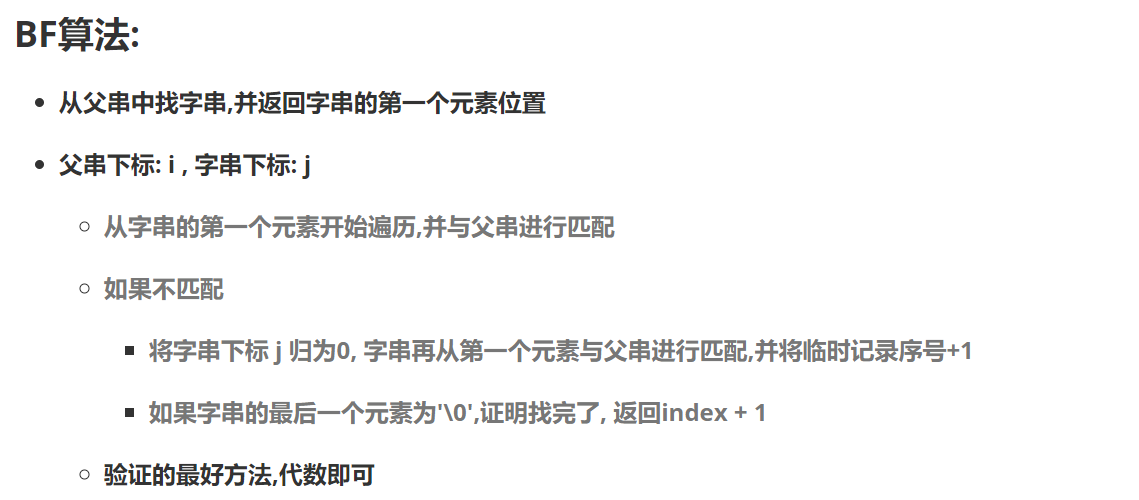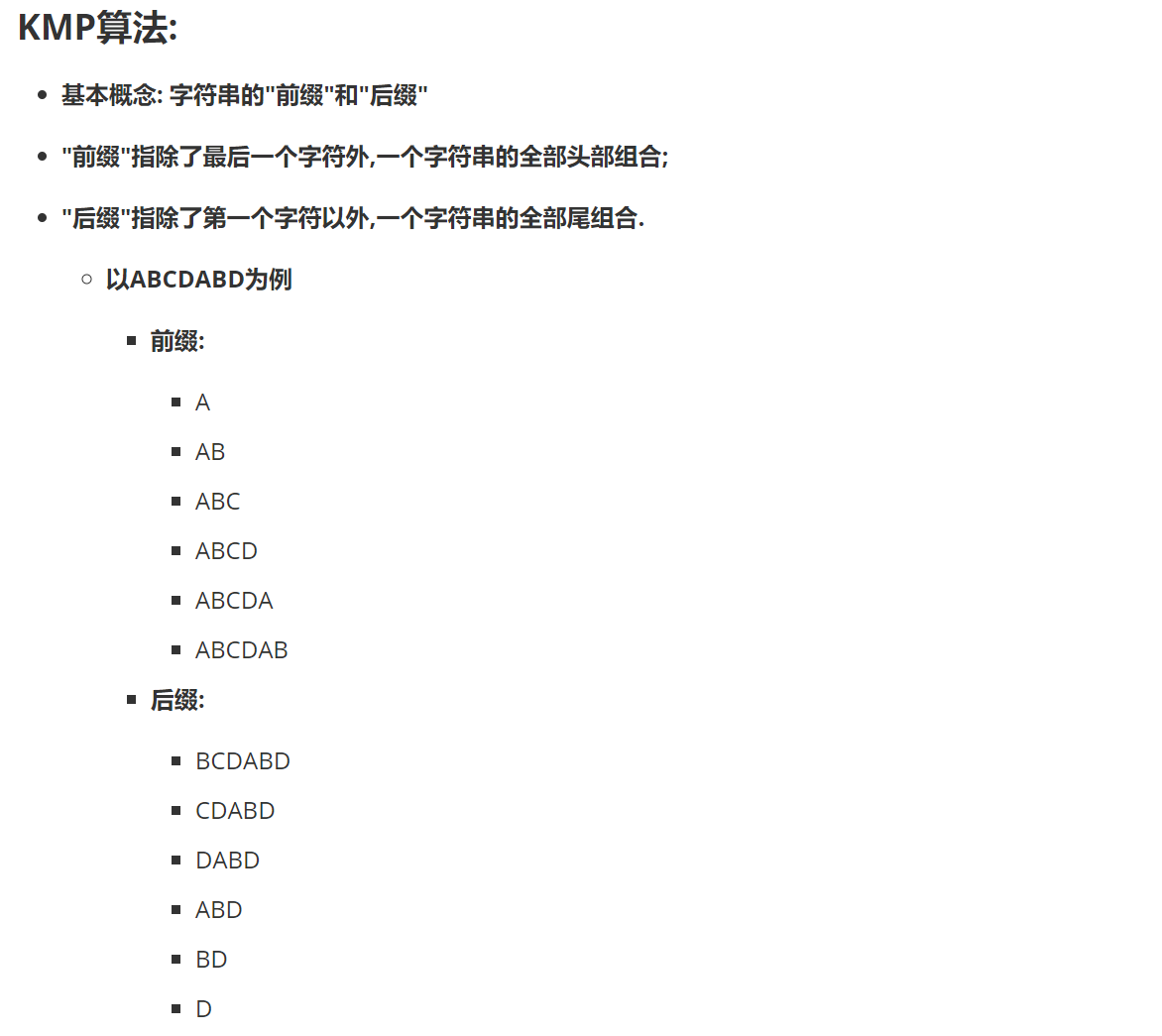串的基本操作(string)
串结构:
#define MAX_SIZE 1024
typedef struct {
char memory[MAX_SIZE]; //串的内存
int cur_size; //当前串的大小
} STR, *LPSTR;
创建串:
初始化串
内存拷贝
更新串的长度
//创建一个串
LPSTR CreateStr(const char* str) {
//开内存
LPSTR p_str = (LPSTR)malloc(sizeof(STR));
//防止'\0'的问题,这里我选择全初始化为'\0'
for (int i = 0; i < MAX_SIZE; ++i) {
p_str->memory[i] = '\0';
}
//形参拷贝到串的内存
int count = 0; //串的长度
while (str[count] != '\0') {
p_str->memory[count] = str[count];
count++;
}
//更新串的长度
p_str->cur_size = count;
return p_str;
}
串的插入:
分两种方式
在串后面插新串(push_back)
在串中间插
注意:最后一个元素的下表是p_str->cursize - 1 (数组下标从0开始)
pos是数组下标,这里写的是在pos的下一个位置进行插入
先腾位置(根据插入串的个数来决定)
插入点后面的元素要向后挪动len(插入进来的串长度)个位置
最后插入新串
//串的插入(在当前串插入多个元素)
//pos是数组下标,这里写的是在pos的下一个位置进行插入
void InsertStrByPos(LPSTR p_str, const char* str, int str_len, int pos) {
//插在下标前面做减操作
// pos -= 1;
if (pos < 0 || pos >= MAX_SIZE) {
printf("下标有误,无法插入\n");
return;
}
//大于数组容量
if (p_str->cur_size + str_len >= MAX_SIZE) {
printf("超出串的容量,无法插入\n");
return;
}
//插在原来串的后面
if (pos > p_str->cur_size) {
for (int i = 0; i < str_len; ++i) {
p_str->memory[p_str->cur_size++] = str[i];
}
} else {
//腾位置
//从最后一个元素开始挪动(p_str->cursize - 1)
for (int i = p_str->cur_size - 1; i >= pos; i--) {
p_str->memory[str_len + i] = p_str->memory[i];
}
//插入新串
for (int i = 0; i < str_len; ++i) {
p_str->memory[pos + i] = str[i];
}
p_str->cur_size += str_len;
}
}
串的删除:
这里写的是区间删除,匹配删除在BF算法中在阐述
如何删除:
直接将后面的元素往前移动
置空后面的元素即可
void DeleteStrByIndex(LPSTR p_str, int start_idx, int end_idx) {
if (start_idx <= 0 || start_idx > end_idx || end_idx > MAX_SIZE) {
printf("区间有误,无法删除\n");
return;
}
int count = end_idx - start_idx + 1; //真实的区间元素个数
//后面的元素往前移动
for (int i = end_idx, j = start_idx - 1; i < p_str->cur_size; ++i, ++j) {
p_str->memory[j] = p_str->memory[i];
}
//置空后面的元素
for (int i = p_str->cur_size; i >= p_str->cur_size - count; --i) {
p_str->memory[i] = '\0';
}
p_str->cur_size -= count;
}
串的遍历:
也可以用%s
//串的打印
void PrintStr(LPSTR p_str) {
for (int i = 0; i < p_str->cur_size; ++i) {
printf("%c", p_str->memory[i]);
}
putchar('\n');
}
//测试数据
int main(int argc, char* argv[]) {
LPSTR p_str = CreateStr("ILoveyou");
PrintStr(p_str);
printf("p_str->cur_size:%d\n", p_str->cur_size);
printf("插在原来串的后面:\n");
InsertStrByPos(p_str, "back", 4, p_str->cur_size);
PrintStr(p_str);
printf("插入XXX:\n");
InsertStrByPos(p_str, "XXX", 3, 2);
PrintStr(p_str);
printf("p_str->cur_size:%d\n", p_str->cur_size);
printf("删除1->3的元素:\n");
DeleteStrByIndex(p_str, 1, 3);
PrintStr(p_str);
printf("p_str->cur_size:%d\n", p_str->cur_size);
return 0;
}

int BruteForce(LPSTR p_str_one, LPSTR p_str_two) {
int index = 0; //临时记录序号,用来返回找到的位置
int i = 0;
int j = 0;
while (p_str_one->memory[i] != '\0' && p_str_two->memory[j] != '\0') {
if (p_str_one->memory[i] == p_str_two->memory[j]) {
++i;
++j;
} else { //不匹配, 重新从第一个
++index;
i = index;
j = 0; //换第二个位置又从父串第一个位置开始比
}
}
if (p_str_two->memory[j] == '\0') {
return ++index;
}
return -1;
}
//测试数据
int main(int argc, char* argv[]) {
LPSTR p_str1 = CreateStr("abcabcacb");
LPSTR p_str2 = CreateStr("abcac");
printf("从第%d个元素开始匹配", BruteForce(p_str1, p_str2));
return 0;
}


//获取匹配值
void GetNext(LPSTR p_str, int next[]) {
int len = p_str->cur_size; //用的是数组下标
int i = 0;
int j = -1;
// 0在这里表示共同元素为0, 有具体的含义,所以初始化为-1了
next[0] = -1;
while (i < len) {
if (j == -1 || p_str->memory[i] == p_str->memory[j]) {
++i;
++j;
next[i] = j; //部分匹配元素的长度
} else {
j = next[j]; //重置j为-1
}
}
}
int KMP(LPSTR p_str_one, LPSTR p_str_two, int next[]) {
//第一个得到表
GetNext(p_str_two, next);
int i = 0;
int j = 0;
while (i < p_str_one->cur_size && j < p_str_two->cur_size) {
if (j == -1 || p_str_one->memory[i] == p_str_two->memory[j]) {
++i;
++j;
} else {
j = next[j];
}
}
if (j == p_str_two->cur_size) {
return i - j;
}
return -1;
}
//测试数据
int main(int argc, char** argv) {
LPSTR p_str = CreateStr("ABCDABD");
int next[8];
GetNext(p_str, next);
for (int i = 0; i < 8; ++i) {
printf("%d\t", next[i]);
}
putchar('\n');
LPSTR p_str_one = CreateStr("BBC ABCDAB ABCDABCDABDE");
LPSTR p_str_two = CreateStr("ABCDABD");
printf("第%d个元素开始匹配\n", KMP(p_str_one, p_str_two, next));
putchar('\n');
return 0;
}



